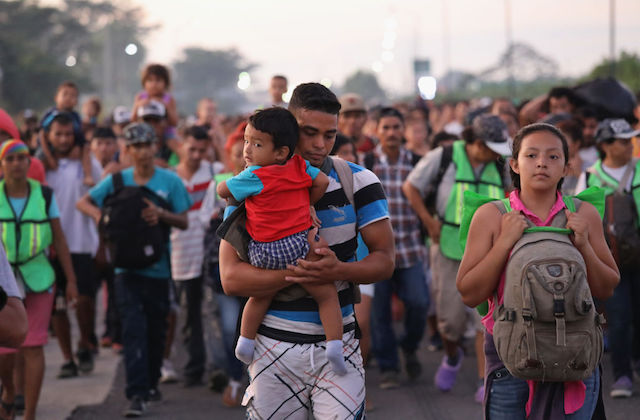As the migrant caravan waits at the Mexican-United States border for admittance into the U.S. to apply for refugee status, the Trump administration continues to claim they are a threat to national security. The reality is that a majority of these families are fleeing extreme violence and poverty in their home country. And many are also escaping another less reported, but just as dangerous, problem: climate change.
Reports The Texas Observer:
rnt
A narrow strip of land flanked by oceans, Central America is one of the world’s most environmentally vulnerable regions. “It’s an area hit by hurricanes on both sides, rocked by volcanic eruptions, drought, earthquakes, and with accelerating climate change, it’s even more vulnerable,” said María Cristina García, a Cornell University professor of American studies who’s writing a book about climate refugees.
Aside from extreme storms—Hurricane Mitch caused 11,000 deaths and displaced 3 million people in Central America in 1998—there is also a region that meteorologists call the “dry corridor.” The area, says The Observer, is “afflicted by alternating drought and flooding, where farmers face crop failure even without the effects of a warming planet.” It is located in El Salvador, Honduras and Guatemala—three nations with a significant number of immigrants to the United States.
In October, thousands of Hondurans began heading to the U.S. in an effort that the media has dubbed “March of the Migrant.” The reported goal of the marchers is to either seek refugee status once they reach Mexico, or request visas to pass through to the United States, organizer Bartolo Fuentes told Reuters.
A typical migration pattern for climate refugees is that they first relocate within their own nation. In certain Central American nations, this can result in the threat of gang violence and severely reduced employment opportunities. This then leads to crossing national borders for safety and economic reasons—triggered initially by climate change. Says The Observer:
rnt
Recent spikes in migration have tracked with precipitation patterns. In 2014, the year of the much-politicized surge in families and unaccompanied children arriving at the border, a drought struck the dry corridor. Farmers were still scrambling to recover when another untimely drought hit early this summer, wiping out first harvests of beans and maize. Many of the asylum-seekers caught up in Trump’s short-lived family separation policy were indigenous Guatemalan farmers fleeing the specter of starvation.
Climate refugees are not recognized by any country or the United Nations. A World Bank report estimates that within sub-Saharan Africa, South Asia and Latin America, 143 million people could be displaced because of global warming by 2050. “There’s a total refusal to deal with the reality of climate change,” García told The Texas Observer about the failure of governments’ policies.
According to The New York Times, more than 2,000 within the migrant caravan have already sought appointments with U.S. immigration officials to petition for asylum, though the wait times for an interview are as long as two months.
